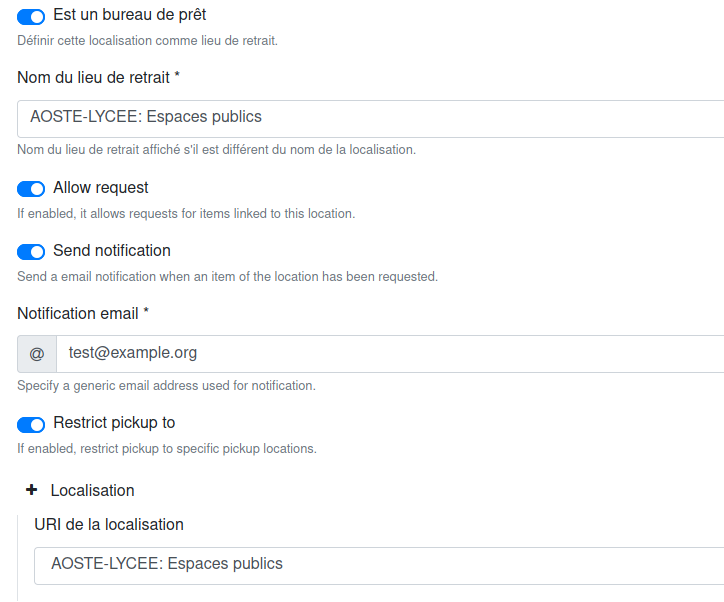A new version of RERO ILS has been released, fairly rich in
new features, which of course we are delighted about. Below is a brief summary
of the main new features. The full release note, consisting mostly of technical
information, is available in English on the GitHub project: v0.9.0.
Research improvement
For a long time now, the team of librarians have been insisting on this point
and the pilot library tests have confirmed this: to search in a library
catalogue, the default application of the boolean operator AND is expected,
in order to reduce noise, even if it means there is no result. This is now
completed. At the same time, the whole indexing of data and the search function
have been reviewed and the improvements are significant.
Closed stacks
UCLouvain, which actively collaborates in the development of RERO ILS, had suggested the implementation of closed stacks, i.e. the ability to block requests or to restrict pick-up locations for a given location. After suggesting it, UCLouvain achieved that development.

Editing a location, with restrictions on the pick-up locations
Manual blocking of readers
It is now possible to block a reader manually. A free text note can be added to explain the reason for this blocking. The blocked person can no longer borrow items or place requests. In his/her account, he/she is notified of the blockage and the reason for it. The Librarian is also notified during loan transactions that are no longer possible (lending or placing a request for the reader).
Metadata and display of records
Work on implementing the data model carries on with the fields of physical description of the documents: material importance, duration, format, illustrations, colours and material elements. These fields are clearly based on the RDA standard, with a finer granularity, whereas MARC used to gather different types of information within the same sub-field. While working to display these fields in the record (the detailed view of the documents), the layout has been reviewed and improved: essential information is highlighted at the top and additional bibliographical details appear in a dedicated tab.